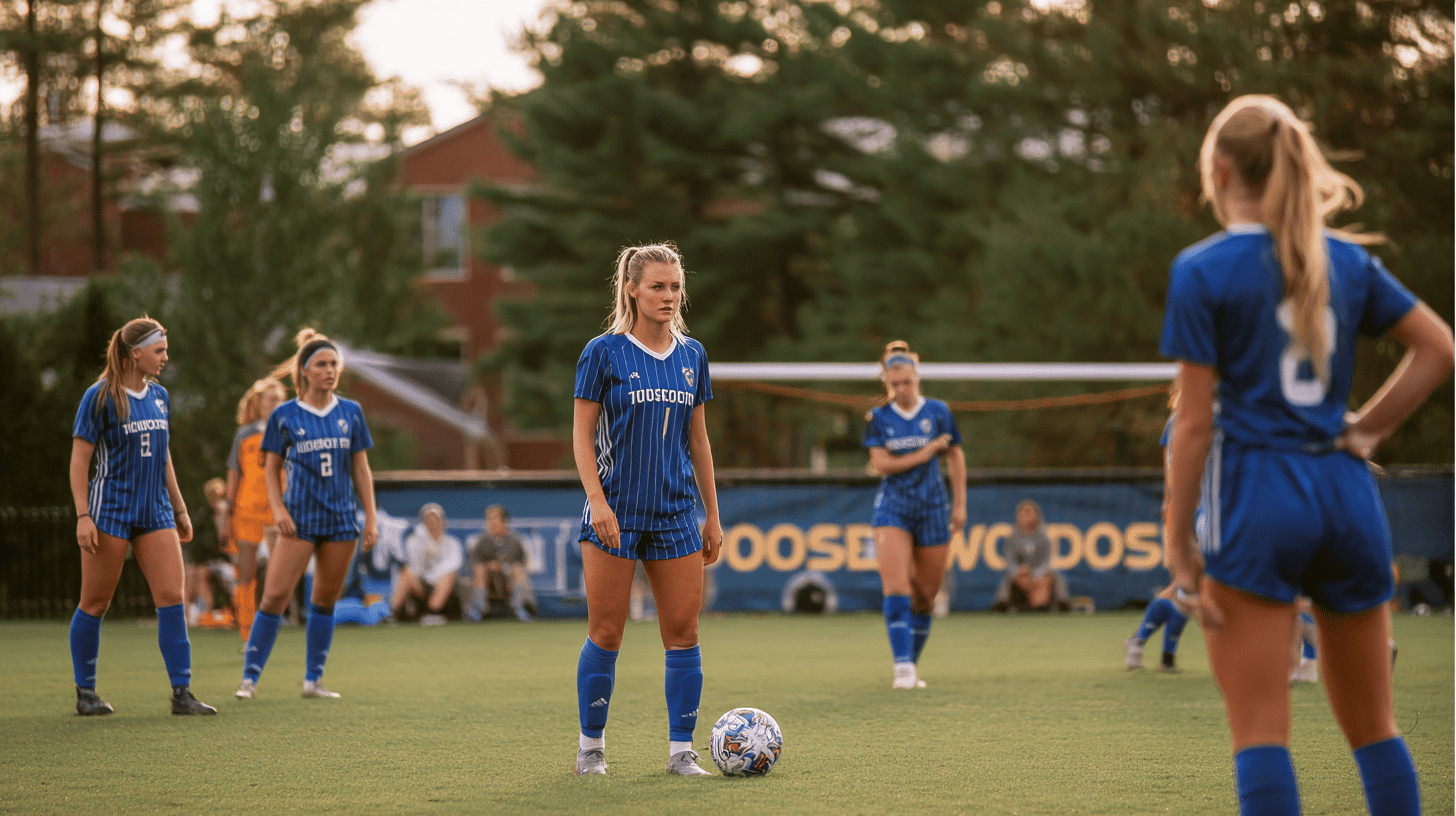Have you ever wondered if Division III (D3) schools give athletic scholarships to student-athletes?
Many students who love sports and want to play in college ask this question. Unlike Division I or II schools, D3 schools are a bit different.
They focus more on learning and personal growth rather than just sports. This does not mean sports are not important, but it does affect how money is given out.
In this blog, we will explain if D3 schools offer athletic scholarships, what kind of financial help they do provide, and how student athletes can still afford college at these schools.
Division I, II, and III: Comparison of Scholarships
Division I (D1) schools are the biggest and often have the most money for sports. They can offer full athletic scholarships to student-athletes.
Division II (D2) schools are a bit smaller, but they still give athletic scholarships, usually part of the total cost, not full.
Division III (D3) schools are different. They are not allowed to give any athletic scholarships at all. Instead, they offer other types of help, like academic or need-based aid.
So, while D1 and D2 schools use sports scholarships, D3 schools support athletes in other ways.
Why Division III Schools do Not Offer Scholarships?

Division III (D3) schools are not allowed to give scholarships just for playing sports. This is a rule made by the NCAA, which is the group that manages college sports in the U.S.
D3 schools believe that students should focus on both school and sports, not just athletics. Their goal is to give students a balance between learning, playing, and personal growth.
That is why they do not use athletic performance to decide who gets money.
Instead, they offer financial aid based on factors such as academic performance or family need, rather than sports skills.
What Financial Aid Can D‑III Student‑Athletes Receive?
Even though Division III schools do not give athletic scholarships, most student-athletes still get help paying for college.
Here is how:
- Almost 75% of D‑III athletes receive financial aid through other programs.
- Need-based aid is given to families who cannot afford full tuition. Students apply for this using forms like FAFSA and may get help such as Pell Grants.
- Merit-based scholarships are awarded for things like good grades, leadership, or special talents, not sports.
- Top D‑III schools like Amherst, Williams, Johns Hopkins, UChicago, and Middlebury offer very generous financial packages to help students afford their education.
Does Recruitment & National Signing Exist in D‑III?
Yes, recruitment does happen in Division III, but it works differently from Division I and II.
In D‑III, there is no official National Letter of Intent, which means athletes do not sign a binding contract with the school.
Instead, everything is more relaxed and flexible. Coaches at D‑III schools can talk to athletes earlier and often show strong interest in having them join the team.
However, any offers made are usually verbal promises, not written agreements.
Also, since D‑III schools do not give athletic scholarships, these offers are not tied to money for playing sports.
Pros & Cons: Should You Consider D‑III as an Athlete?
Thinking about playing sports at a Division III school? Here are some easy-to-understand pros and cons to help you decide:
| Pros | Cons |
|---|---|
| You can play the sport you love while focusing on your education | No athletic scholarships are offered |
| D‑III schools often have smaller class sizes and more personal support | Sports facilities and gear may not be as advanced as D‑I or D‑II |
| Many student-athletes still get financial aid based on need or grades | Less attention from the media and scouts |
| You will have more time for friends, clubs, and other college activities | The competition level may be lower than higher divisions |
| Great for students who want a balance between sports and academics | It may not be the right fit for those who want to go pro in sports |
How to Maximize Financial Aid at a D‑III School?

Even though Division III schools do not offer athletic scholarships, you can still get good financial help if you plan well.
Start by applying to schools that have strong financial aid programs and large endowments.
Colleges like Amherst, MIT, Swarthmore, and the University of Chicago are known for meeting full financial need for students.
To boost your chances, keep your grades high and stay active in leadership roles or extracurricular activities, as many schools offer merit-based scholarships.
Be sure to fill out the FAFSA as early as possible.
Also, talk to coaches; their support can sometimes help during the admission or aid process.
Comparing D‑III Aid vs D‑II Partial Scholarships
Wondering how Division III financial aid compares to Division II athletic scholarships? Here is a clear side-by-side look:
| Division III (D‑III) | Division II (D‑II) |
|---|---|
| No athletic scholarships are allowed | Offers partial athletic scholarships to some athletes |
| Most aid is need-based or merit-based | Scholarships are based on sports skills |
| Many athletes receive generous aid through academics or financial need | Scholarship money may not cover full tuition |
| Focus on the balance between sports and academics | Focus more on competitive athletics |
| Financial aid depends on the student’s grades, talents, and family income | Athletic aid depends on performance and the coach’s decision |
Conclusion
Division III schools may not offer athletic scholarships, but that does not mean student-athletes can not get help paying for college.
Many D‑III schools give strong need-based and merit-based financial aid. They also offer a great balance between sports, academics, and college life.
If you love your sport and want a full college experience, not just focused on athletics, D‑III could be a great fit for you.
Always apply early, keep your grades up, and talk to coaches. With the right steps, you can enjoy playing your sport and still get the support you need.













